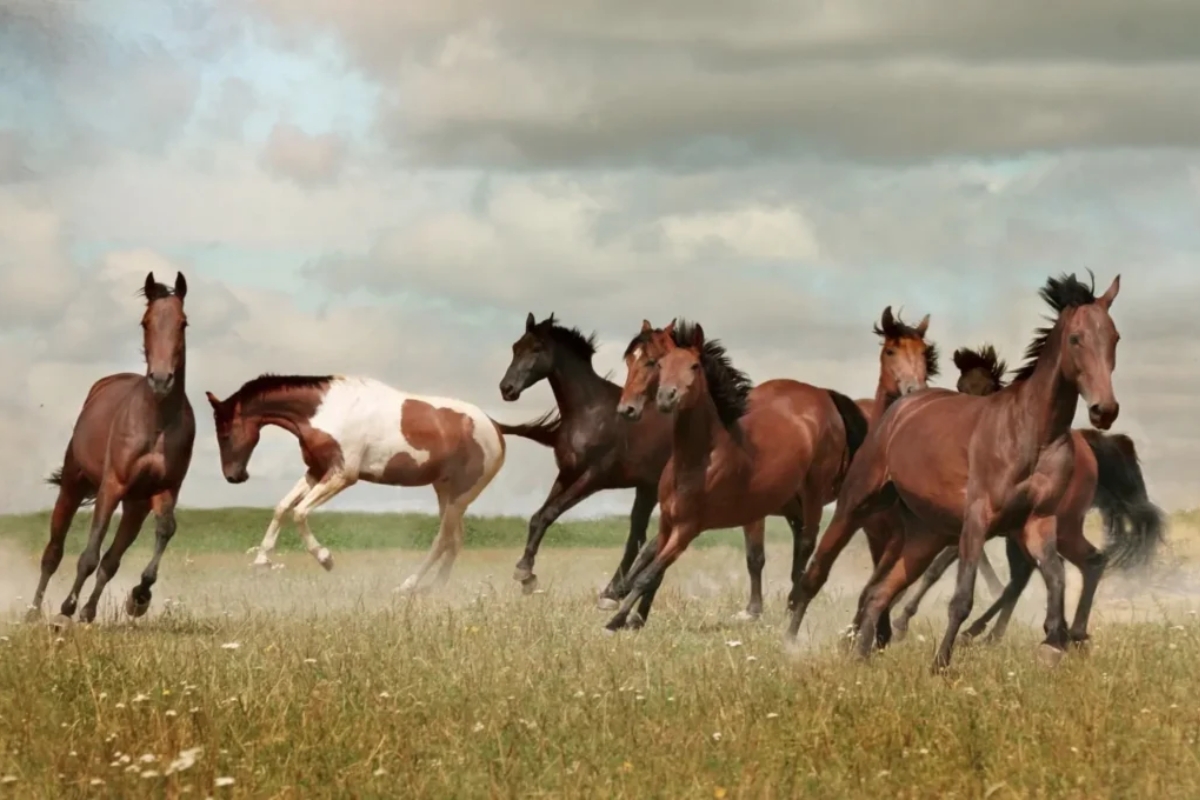Menu

Do you have a horse that faithfully stands and consumes all the wrap every time it's fed in the paddock? Or perhaps you own a horse that is quickly distracted during its meal to keep an eye on the other horses and everything else happening around it? We often think that the horse that gets to eat everything it wants must be the dominant one in the herd, but research suggests that this might not be the case.
Also read: Research confirms: Horses form strong bonds with humans
One might easily believe that the horse standing in the corner of the paddock and looking around might be at the bottom of the hierarchy. However, research suggests that this may not necessarily be the case, even if the horse barely touches the wrap or hay. In fact, that horse could be the dominant one, looking after, bossing the others around in the herd, and generally being more lively. As a horse owner, one should pay attention to ensure that the spry, dominant horse gets enough to eat, and that the others in the herd don't end up overweight because they're constantly burying their heads in the wrap.
Horses that spend much of their time doing things other than eating typically have a lower BCS, also known as body condition score, than horses that eat more evenly distributed throughout the day. It has been previously assumed that horses that are on the thin side, or move around a lot, must also be those at the bottom of the hierarchy. A recent study, however, challenges this belief that horses with a good appetite and on the heavier side are more dominant than thinner horses.
Sarah Giles, a PhD student at the University of Bristol in North Somerset in the UK, observed along with a research team over 100 horses. The horses lived in 20 different herds, and the researchers watched them for three hours split into two sessions a day. In the process, they found that the more a horse is interrupted during its meals and allows itself to be distracted by repositioning other horses and monitoring the surroundings, the lower their BCS (body condition score) can be. The study once again highlights the importance of horse owners paying attention to the feeding condition, regardless of the horse's position in the herd. In other words, one cannot take for granted that because one's horse is dominant, it will get the amount of feed it needs.
From early studies, it has been hard to prove whether horses are actually dominant because they are overweight, or overweight because they are dominant. This study shows, however, that the title of lead horse is more tied to the horse's actions in the herd – whether it is very observant and active in general instead of the actual amount of food it consumes.
By nature, horses search for food and of course eat what they find to survive - this is also known as feeding efficiency. It refers to how efficient and constant horses consume their food. Some horses tend to interrupt their meals to observe their surroundings, move, listen, and move the others in the herd. When there's a lot of activity, the horse's feeding activity naturally drops.
Logically, feeding activity also decreases in horses that are moved/chased around by the dominant horse, but what's new is that feeding activity also drops in the horse that bosses the others around, because it rarely takes the time to get back to its food. It thus spends more time in charge than actually taking in nourishment.
Also read: Recognising the Signals of Horses in Stressful Situations
It's important for horse owners to understand what kind of horse they're dealing with when it comes to the hierarchy in the herd – is it dominant and "forgets" to eat, or does it constantly have its head in the wrap? Both situations, of course, need to be accounted for. With the active horse, it's a good idea to ensure that the horse is as comfortable as possible, so it isn't constantly interrupted during meals. Make sure it is in a herd where it feels at ease, and that there is a good view from the feeding station - this way, it doesn't have to constantly move around to keep an overview.